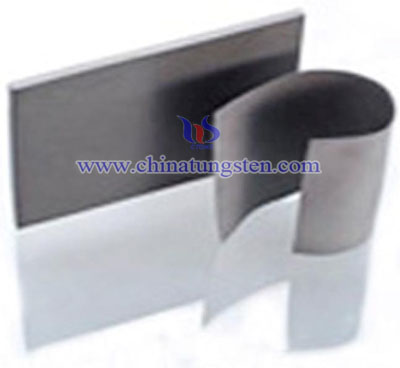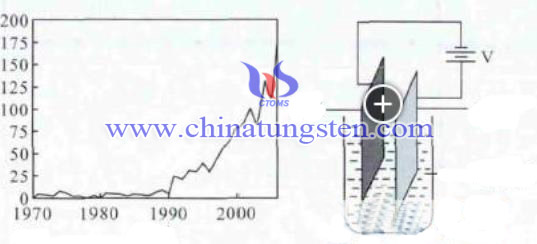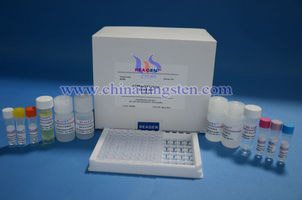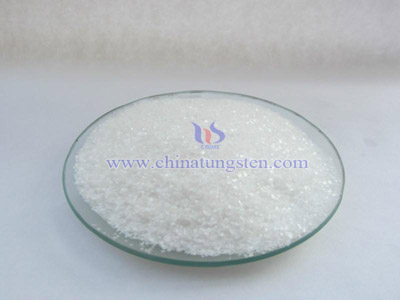Tungsten Polymers: The Best Replacement To Lead
- Details
- Category: Tungsten Information
- Published on Wednesday, 13 January 2016 15:17
- Written by TungstenAlloy
- Hits: 253
Lead is a heavy metal and can be poisoning the day to day operations of human organs are inhibited. Despite these health risks, lead is very useful in industries today because of the properties it possesses, such as its malleability and low melting point making it easy to mold and melt, in addition to its low cost which makes it economical for use for industrial purposes.
Recent studies show that the heavy usage and poor disposal of lead products for decades has caused irreversible effects to the environment and as such lead is now ranked as the second most hazardous substance by the United States government. A kind of material without toxic needed badly, tungsten polymers are being introduced as an effective lead alternative in a variety of applications for which lead has traditionally been used. This push for alternatives is due to the threat that leads poses to the environment and to human health.
Therefore, tungsten polymers have become a notable alternative to lead in numerous applications because they can match the physical properties of lead, like high density, while being environmentally benign. This polymer composite is made up of tungsten powder and a plastic base resin, which are compounded together into a thermoplastic material at 11 g/cc, the same density as lead. The base resin systems are made up of; polysulfones (PSU), co-polymides, polyamides (PA), polymethylpentenes (PMP), polyurethanes (TPU), acryloynitrile butadiene styrene (ABS), polyethylenes (PE) and polyetheretherketones (PEEK).

| Tungsten Alloy Supplier: Chinatungsten Online www.tungsten-alloy.com | Tel.: 86 592 5129696; Fax: 86 592 5129797;Email:sales@chinatungsten.com |
| Tungsten News & Prices, 3G Version: http://3g.chinatungsten.com | Molybdenum News & Molybdenum Price: http://news.molybdenum.com.cn |
Electrophoretic Deposition Tungsten Trioxide Thin Film
- Details
- Category: Tungsten Information
- Published on Wednesday, 13 January 2016 13:49
- Written by qiongyao
- Hits: 241
WO3 thin film renders color by irradiation with light or by using an appropriate electric field energy that referred to as a photochromic or electrochromic, which has potential applications in smart windows, large area displays and automotive mirrors, etc. Preparations of WO3 thin films are electrophoretic deposition magnetron sputtering, chemical vapor deposition, and sol - gel method.
 Electrophoretic deposition refers to a stable suspension by the action of the electric field, the colloidal particles deposited material called electrophoretic deposition process. E.g., DC voltage is applied to the electrodeposition coating, and charged paint particles move to the cathode, and the cathode surface with an alkaline effect is produced by the formation of insoluble material deposited on the work surface. There are two processes on accordingly electrophoretic deposition comprises, one is electrophoresis, and the second is deposition. Entire electrophoretic deposition process is divided into the following four steps:
Electrophoretic deposition refers to a stable suspension by the action of the electric field, the colloidal particles deposited material called electrophoretic deposition process. E.g., DC voltage is applied to the electrodeposition coating, and charged paint particles move to the cathode, and the cathode surface with an alkaline effect is produced by the formation of insoluble material deposited on the work surface. There are two processes on accordingly electrophoretic deposition comprises, one is electrophoresis, and the second is deposition. Entire electrophoretic deposition process is divided into the following four steps:
(1) Electrolytic: initially, producing hydrogen and hydroxyl ions OH is the reaction at the cathode electrolysis reaction, the reaction resulting in the formation of an overbased cathode surface boundary is layer, when the effect of the cation and the hydroxide becomes water-insoluble substances, it coating film deposition:
(2) Electrophoresis: the cationic resin and H + in the electric field moves to the cathode, and anions to the anode movement;
(3) Electrodeposition: the surface to be coated, a cationic resin and the surface of the cathode basic acting, and not precipitated sediment deposited on the workpiece.
(4)Electro-osmosis: thin film coating on the surface of the solid and translucency with the majority of the pores leaking water that is discharged from the cathode coating thin film in the electric field, which causing the coating dehydration. Tu film is adsorbed on the surface, completing the electrophoresis process.
Dissolving amount of tungsten powder with hydrogen peroxide (H2O2), to prevent bumping solution, H2O2 should be added and dissolved during stirring constantly. After cooling and filtering completely, adding the appropriate amount of concentrated sulfuric acid (CH3CH2OH) and acetic acid in the filter solution (CH3COOH), which can get WO3 sol. Electrophoretic deposition is conducted under greenhouse, and the current density is DC steady flow instrument, preparing WO3 thin films from taking the substrate as an electrode, the current passing through the cathode that can be deposited WO3 thin film, which can obtaining the deposition required thickness, simple operation, a film-forming, high transparency, film uniformity and the substrate with a solid advantage.
| Tungsten Oxide Supplier: Chinatungsten Online www.tungsten-oxide.com | Tel.: 86 592 5129696; Fax: 86 592 5129797;Email:sales@chinatungsten.com |
| Tungsten News & Prices, 3G Version: http://3g.chinatungsten.com | Molybdenum News & Molybdenum Price: http://news.molybdenum.com.cn |
Sodium Molybdate and Sodium Tungstate Corrosion Inhibition to Carbon Steel
- Details
- Category: Tungsten Information
- Published on Tuesday, 12 January 2016 19:41
- Written by linlu
- Hits: 213
| Sodium Tungstate Supplier: Chinatungsten sodium-tungstate.com | Tel.: 86 592 5129696; Fax: 86 592 5129797;Email:sales@chinatungsten.com |
| Tungsten News & Prices, 3G Version: http://3g.chinatungsten.com | Molybdenum News & Molybdenum Price: http://news.molybdenum.com.cn |
Sodium Tungstate, Sodium Molybdate and Other Reagents Synergistic Corrosion Inhibition
- Details
- Category: Tungsten Information
- Published on Tuesday, 12 January 2016 19:44
- Written by linlu
- Hits: 259
 When adding sodium molybdate and sodium tungstate alone in the simulated cooling water, with the increase of the concentration of sodium tungstate and sodium molybdate in simulation cooling water, the corrosion rate of carbon steel gradually reduces and the corrosion rate increases. But to achieve better corrosion inhibition effect, the concentration of sodium molybdate and sodium tungstate is required quite high. In order to reduce the amount of sodium molybdate and sodium tungstate, this paper introduces the synergistic corrosion inhibition of sodium molybdate, sodium tungstate and common organic phosphoric acid (HEDP), orthophosphoric acid and Zn2+.
When adding sodium molybdate and sodium tungstate alone in the simulated cooling water, with the increase of the concentration of sodium tungstate and sodium molybdate in simulation cooling water, the corrosion rate of carbon steel gradually reduces and the corrosion rate increases. But to achieve better corrosion inhibition effect, the concentration of sodium molybdate and sodium tungstate is required quite high. In order to reduce the amount of sodium molybdate and sodium tungstate, this paper introduces the synergistic corrosion inhibition of sodium molybdate, sodium tungstate and common organic phosphoric acid (HEDP), orthophosphoric acid and Zn2+.| Sodium Tungstate Supplier: Chinatungsten sodium-tungstate.com | Tel.: 86 592 5129696; Fax: 86 592 5129797;Email:sales@chinatungsten.com |
| Tungsten News & Prices, 3G Version: http://3g.chinatungsten.com | Molybdenum News & Molybdenum Price: http://news.molybdenum.com.cn |
Sodium Molybdate and Sodium Tungstate Corrosion Inhibition to Stainless Steel
- Details
- Category: Tungsten Information
- Published on Tuesday, 12 January 2016 19:39
- Written by linlu
- Hits: 237

| Sodium Tungstate Supplier: Chinatungsten sodium-tungstate.com | Tel.: 86 592 5129696; Fax: 86 592 5129797;Email:sales@chinatungsten.com |
| Tungsten News & Prices, 3G Version: http://3g.chinatungsten.com | Molybdenum News & Molybdenum Price: http://news.molybdenum.com.cn |
More Articles...
- Method of Taifu Application in Wolframite Dressing
- Gravity Concentration and Selection in Wolframite Dressing
- Ammonium Paratungstate with High Purity Prepared by Ultrasonic-Microwave-Hydrothermal-Synergism-Enhanced Method
- Direct Reduction of Ammonium Metatungstate and Ammonium Paratungstate Producing Tungsten Powder 2/2





 sales@chinatungsten.com
sales@chinatungsten.com